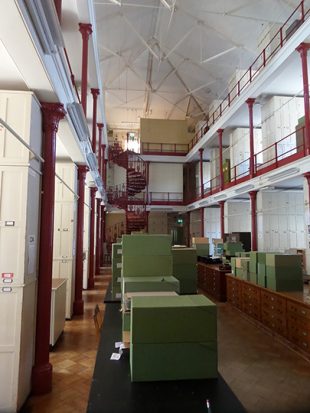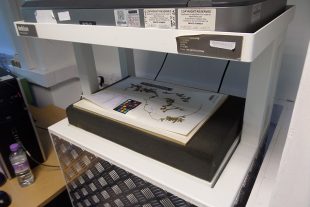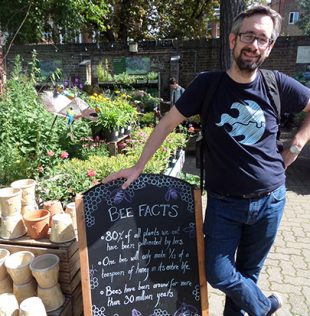
Imagine losing 7 million plant specimens in a fire. Kew’s plant store (herbarium) faces this risk. The ‘server room' as it’s known, holds 250 years worth of international plant data. To lose generations of passion, love, care and meticulous attention to detail would be heartbreaking. Our recent visit was a massive eye-opener.
Last week David Cope from Kew gave David B and Mike a tour. The plants are used for identification by scientists and researchers who visit. We saw how the plants are mounted on paper and stored in folders kept in green boxes and stored in cabinets, just like...err.. a ‘server room'.
In the plant cave (Kew basement) the plants are being digitised – gradually – to ‘back up the server’. In the last 9 years about 10% has been backed up, by volunteers using an upside-down scanner. At this pace in 81 years Kew will have finished the backup.

There were a couple of lovely visitors in the herbarium poring over different samples. There's no postal service to investigate samples: 250 year old plants don’t do so well in the post. So, travel is a must – and people come from all over the world. Digitising the server room will give everyone across the world the opportunity to use the most comprehensive plant database. Kew have set themselves the target of finishing in the next 5 years (Kew strategy) not 81 years.
250 years of history creates opportunities and hurdles. Opportunities from the richness of the data collected. One of the hurdles is that 81 years doesn't seem very long: when you're 250 years, old 5 years seems very fast. But Kew is keen to adopt and capitalise on advances of the digital age as they did with the industrial revolution. We did see a digital camera and iMac, but they weren't in use when we visited.

Kew is geared-up for the research community, not the innovation economy. Though there is no need for them to be incompatible and they are moving ever-closer though projects like #openscience, appreciating the starting point is important. It’s funny how the innovation economy feels like the 'new sexy'. David B mused that, over 150 years ago, Charles Darwin’s specimen-collecting work would have been seen in the same way.
From the visit to Cefas, and now to Kew, it’s even clearer that there are similarities between each organisation in the Defra group. Each one has evolved and continues to evolve it’s own set of relationships with government, the Crown and commercial enterprise. Striking the right balance between all of the different financial supporters and volunteer communities is a tricky one.

Pictures provided by Mike
